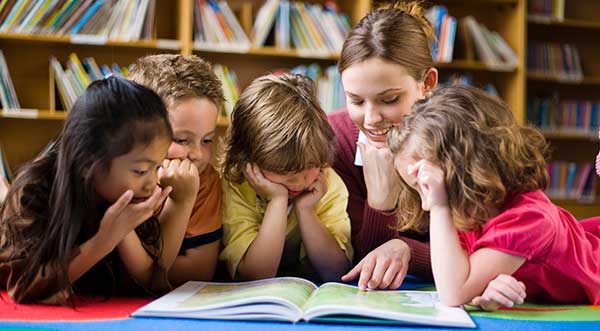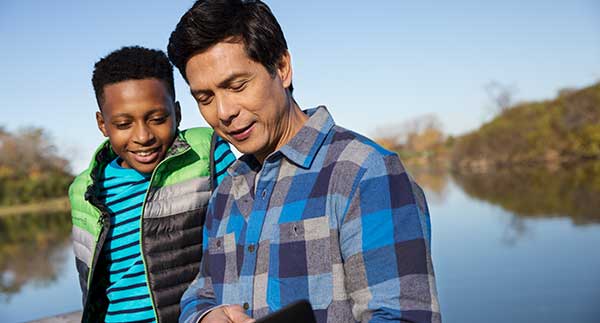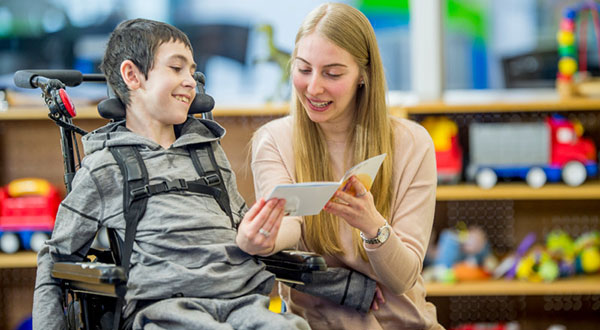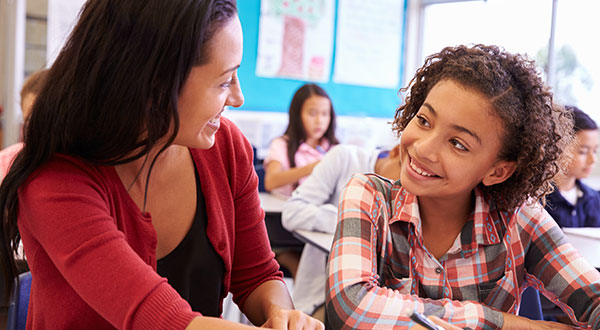January 20, 2022
Educators know that positive student-teacher relationships are crucial to classroom success. But building relationships with students is sometimes easier said than done.
Research shows that even a few minutes of dedicated effort each day can help you to develop relationships with your students that will help drive student success. This blog breaks down the benefits of good relationships with students and provides strategies for building these relationships. Read on to find out more.

Why is it important to build relationships with students?
Having positive relationships with teachers is fundamental to students’ success. When students feel supported in the classroom, they are more engaged in learning and more likely to achieve better academic outcomes. They are also less likely to have behavioral problems.
Studies have shown that there are many positive results when students feel safe and understood. Some of the benefits of positive student-teacher relationships are that they:
- Build motivation
- Create safe spaces for learning
- Build new pathways for learning
- Improve student behavior
So, how do you build positive relationships with your students? The best way teachers can build relationships in the classroom is simply by talking with learners. This not only helps you to get a sense of their home life and any struggles you may need to be aware of, but it also helps you to build the foundation for a strong relationship.
In fact, a strong student-teacher relationship is the number one strategy for promoting positive student behavior and can go a long way in building resilience in students from challenging backgrounds.

4 benefits of building strong relationships with students
We know it’s important to develop relationships with students in the classroom. But what are the top benefits of doing so? Let’s explore the top four.
#1: Building connections with students is the number one strategy in promoting positive student behavior
Research demonstrates that interactions with teachers, especially in early childhood, plays an important role in shaping the behavior and social skills of students. Your students are likely mirroring your behavior—so the more positive interactions, the better!
We can look to neuroscience to find out why this happens. Here, we’re interested in a structure called the mirror-neuron system. When people observe an action, the neural pathways that would be active if they actually performed it themselves light up. This means the brain is practicing the action it sees, which allows people to act more quickly than if they hadn’t seen it.
How does this apply to the classroom?
As you talk to your students, think about what behaviors and social skills you want to impart—and model those. Because children are more likely than adults to imitate behaviors they see, these positive behaviors in the classroom will benefit your students and the environment as a whole.
#2: Positive feedback fosters positive relationships in the classroom
When you have a positive interaction with students or give them praise, their brains release dopamine. This creates a cycle of positivity. It works like this:
- You give positive feedback.
- The student’s brain releases dopamine.
- The student feels good and wants to repeat that sensation.
- The student has more motivation to perform in such a way that will earn more praise.
- You give more praise…and the cycle repeats.
Taking the extra effort to ensure each student receives positive feedback throughout the day helps to make your classroom environment more positive, safe, and conducive to learning.
#3: Positive relationships create safe spaces for learning
If students are continually criticized for their failures, especially without also receiving more positive feedback, they’ll learn to be afraid to take risks in their learning. But risk-taking can:
- Empower students
- Increase self-esteem
- Build resilience to failure
So it’s important to build psychological safety for students. You can do this by praising the effort they made, as well as unpacking the outcome they achieved. Let them know that some things are hard and it’s okay to answer incorrectly or fail sometimes.
You can also model this by letting them see how you respond to your own failures.
#4: Good relationships offer new opportunities for learning
Let’s get back to the neuroscience we were discussing earlier. When unfamiliar material is taught, new neural pathways are formed to connect things the students already know with the new information. If they don’t understand the context or can’t link the new material with something they know, they won’t understand the lesson as well.
So how can having a better relationship with your students help with this?
You can use the deep knowledge you have of your students to connect learning material to their interests, hobbies, and backgrounds. But without investing dedicated time in getting to know the students in your class, you won’t have access to this valuable tool.
Whole child data to support student learning
Discover Renaissance solutions that provide a more complete picture of each student’s needs.

How to build relationships with students
A productive relationship between teachers and students requires that they have more positive interactions than negative ones. Researchers recommend that you follow the “Magic Ratio,” meaning that you have five positive interactions for every negative interaction.
Some examples of positive interactions with students could be:
- Asking about a sibling or a pet
- Commenting on a student’s success in sports, dance, or other extracurricular activity
- Complimenting a student’s haircut
Many students who learn and think differently tend to have more negative interactions than positive ones. Think about a student who has ADHD and needs constant reminders to stay on task. This kind of situation presents a challenge when it comes to the Magic Ratio.
But that doesn’t mean you should never correct students or give reminders. You just need to make sure the positive outweighs the negative. When you get to know your students well, you’ll understand when they need encouragement or praise and when they are open to constructive feedback.
Connect 1-on-1
Every student can benefit from one-on-one time with a teacher, especially students who demonstrate behavioral issues. When students can interact with just the teacher, they won’t feel the need to show off for others and will often be more open and honest.
A fantastic way to connect with students is to employ the 2 x 10 Strategy. This is when a teacher spends two minutes a day for ten days in a row talking to a student who needs support about anything positive. This strategy helps teachers intentionally build relationships with students whom they may not have connected with before.
Show interest in students’ lives outside of school
Getting to know the student as a whole instead of just by their classroom performance will go a long way to helping build relationships. For instance, you can show that you want to know about the things they like to do or what interests them.
For example, have you ever met a student who was into Minecraft and didn’t want to spend hours talking about it? Take advantage of that as a time to connect with the student.
Teachers can also consider attending student events. A teacher’s time is precious, but investing moments here and there in going to student …
- Competitions;
- Productions; and
- Sporting events
…helps create a bond with your learners and shows them that they are important to you. The time you dedicate here has a positive effect in the classroom
Get creative with seat assignments
We know that seat assignments are an important part of a good classroom management plan. But they can also be a good way for you to get to know your students better—and for them to get to know each other.
For instance, if you have students sitting in table groups, you can use an online random seating chart generator to reassign them once a week, once a month, or at whatever interval you decide.
Each time students move to their new seats, have them all answer a question for each other, such as “What food could you eat every day for the rest of your life and never get tired of?” Circulate throughout the room and participate in the discussions to learn more and build connections with students.
Pay attention to the small details
Even something as simple as learning a student’s name quickly and correctly can be part of the foundation of building relationships with students. This shows each student that you value their identity.
Look for something to comment on, like a t-shirt or a fun pair of shoes. This affirms to your students that you notice them as people, not as numbers or grades. Finding small ways to connect can add up in big ways.

How can teachers improve student relationships?
Students demonstrating challenging behavior may not be as open to the techniques we’ve discussed. Because these students tend to have a higher percentage of negative interactions with adults at school, they may not be as open to your initial attempts to communicate with them.
Here are some ways you can make an extra effort to build relationships with students demonstrating behavior issues:
- Find a time or place—sometimes away from the classroom is best—where you can have a positive discussion.
- Remind yourself to take notice of any good behaviors they exhibit—no matter how small—and mention them to the student.
- Don’t lose heart if they don’t seem to respond right away. Your message is being heard and will likely make a difference in the long run, even if you don’t see the immediate effects.
Teachers share 7 tips for building relationships with students
Positive student relationships are fundamental to academic success. Knowing this, we invited educators in our Renaissance Royals community to share how they build positive relationships in the classroom. Here are seven ideas:
#1: Welcome letters
“I send a welcome letter home at the beginning of the year, introducing myself to my students and welcoming them and their parents to my class. I make it personable, so they see me as a person, not just as a teacher.” —Dawn H.
#2: Student-interest surveys
“On the first day of school, I have students complete an interest survey. This gives me an idea of the things they are interested in, such as movies, TV shows, books, and hobbies. I try to incorporate the things they enjoy into lessons as much as possible. If it is something I do not know much about, I try to learn about it, so we have something to discuss. If they have certain career goals, I try to incorporate them. The survey has definitely helped to build relationships with my students, and it shows that I really pay attention to what they care about as well.” —Angela L.
#3: Student input
“I ask my students for their input in class decisions that affect them. For example, each quarter, they decide the order they will use to line up. Also, I let them choose their partners in activities to reduce conflicts.” —Monica B.
#4: Teacher involvement
“Go the extra mile with your students whenever possible. If you have a student who plays a sport, attend a game. If they have an event, make an appearance. They notice your dedication and that you support them in multiple aspects of their lives.” —Jacob B.
#5: Personalized interactions
“I give each of my students a hug, call them by name, and acknowledge them EVERY MORNING…BEFORE THEY ENTER MY CLASSROOM!” —Emily C.
#6: Reward systems
“I use stickers to encourage my students and reward them for good behavior and hard work. If they get an ‘apple of my eye,’ ‘superstar,’ or ‘paw-sitively awesome’ sticker, they leave their name on my board. At the end of the week, I write a card to their parents, telling them positive things about their child, and mail the cards. This builds relationships with the students and parents.” —Meredith S.
#7: Pay attention
“Listen when students need someone to hear them out. Show you care, because you never know what type of affection they are getting at home. Most importantly, act as if they are the most important person in the world!” —Fatima P.

Join Renaissance Royals for more ideas on how to build relationships with your students
Building relationships takes time and patience. From chatting with students while supervising recess to attending a sporting event or music recital, there are plenty of ways to make connections with your students.
If you’re looking for more ideas, join Renaissance Royals. It’s a free online community for Renaissance educators where you can engage in discussions and get even more ideas on building relationships with students.
Questions?
Connect with an expert to learn more about Renaissance Royals or about our assessment and whole child data solutions.

